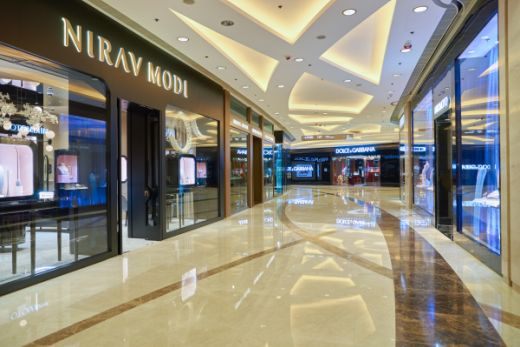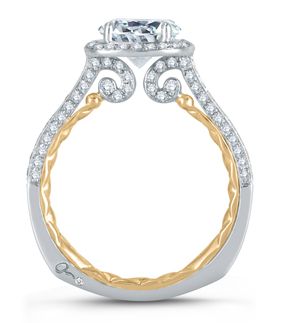|
|
What We Know About Nirav Modi’s US Companies
Court declaration lifts lid on Firestar, Fantasy and A. Jaffe
Mar 7, 2018 11:08 AM
By Joshua Freedman
|
|
|

RAPAPORT...
The $2 billion fraud allegations against Indian jewelry
tycoon Nirav Modi and Gitanjali Gems chief Mehul Choksi have shocked the
industry, as well as raising questions about the wider impact on the trade.
One of the first casualties of the fallout was US jeweler
Firestar Diamond, which, by virtue of being part of Modi’s business empire,
found itself thrust into a crisis. Firestar and two of its affiliates, Fantasy
and A. Jaffe, filed a petition for Chapter 11 bankruptcy in the US on February
26.
Until recently, the details of Firestar’s operations and
connections to Modi were a subject of much talk, but little confirmed fact.
However, Mihir Bhansali, the president of the three companies, filed a court
declaration on February 28 under penalty of perjury, lifting the lid on the
businesses and their ownership.
Here, Rapaport News presents the key information
about Firestar, Fantasy and A. Jaffe, and their interaction with the wider
jewelry and financial community, as contained in that filing.
What are Firestar Diamond, Fantasy and A. Jaffe?
All three companies are wholesalers of fine
jewelry, operating out of New York, though their precise focuses differ.
Firestar and Fantasy supply jewelry to major chains,
including to Signet Jewelers brands Zales, Kay Jewelers and Jared, as well as
to department stores Macy’s and J.C. Penney. Other clients include wholesale
club Sam’s Club — which Walmart owns — and Costco. All
those organizations either declined to comment on the nature of their supply
from Firestar and Fantasy, or did not respond to Rapaport News’ request for information.
Both jewelers also supply to the US Navy Exchange Service Command (NEXCOM), a provider of goods and services to military members. Firestar produces NEXCOM’s Navy Star Diamond, a product that is exclusive to the exchange, a NEXCOM spokesperson said.
Firestar also has several copyrights, trademarks and
product-design patents, while both Firestar and Fantasy hold certain
intellectual-property rights related to the Endless Diamond brand. Endless-cut diamonds — a Modi creation — are
curved, such that they can entirely surround a ring without gaps. (Modi gifted
his first Endless ring to his wife, according to an interview he gave with the Financial
Times in November 2016.)
Firestar and Fantasy have annual sales of about $90 million
between them, according to the court declaration. The two companies currently
have about $33.25 million-worth of jewelry on consignment with customers.
A. Jaffe, meanwhile, is centered around its 125-year-old
luxury bridal brand, “A.JAFFE.” The company sells fine jewelry to hundreds of independent
jewelry stores in the US. Its sales have grown by double-digit percentages for
the past three years, it said. The company projected them to rise to $23
million in fiscal 2018. Some $7.3 million-worth of its jewelry is on
consignment with clients.
What’s special about A. Jaffe’s products? 
Its rings are recognizable by two features for which it
claims to hold certain intellectual-property rights. The first is the “quilt”
style, a criss-cross design on the inside of the ring. The second is its rendering of the “European”
shank — a style of ring shape with a slightly flattened base. A. Jaffe’s version of the latter features a lower-case “a” on the bottom left of the ring, next to a small
diamond.
Have they always had those names?
No.
Fantasy, formed in 2012, has had that name ever since.
However, when Firestar came into existence in 2004, it was under the name
Jewelry Solutions International. It became Next Diamond in 2005. In 2007, its
name changed to Firestone, before a final switch in 2011 to Firestar Diamond.
A. Jaffe is an older operation: It was founded in 1975 as
Sandberg & Sikorski Diamond Corporation, before dropping the word “Diamond”
in 1995. It became A. Jaffe in 2011.
Does Nirav Modi own them?
Ultimately, yes, but in a complicated way. This is how
Bhansali’s declaration explains the ownership structure:
Modi is “directly or indirectly” the majority shareholder of
Indian company Firestar International. That company owns Hong Kong-based
Firestar Holdings, which owns Synergies Corporation, which owns Firestar Group,
which owns Firestar Diamond, which owns Fantasy. Synergies, Firestar Group and
Firestar Diamond are US corporations.
Synergies also owns 95% of A. Jaffe, with the remainder held
by its founder, Sam Sandberg.
Who runs them?
Bhansali is the president and sole director of Firestar
Diamond, Fantasy and A. Jaffe, and serves in the same role for Firestar Group
and Synergies. Ajay Gandhi is secretary and chief financial officer for those five companies.
What do the allegations against Modi mean for the
companies?
Indian authorities investigating the claims began seizing
and freezing assets belonging to Modi and his companies, resulting in the
closure of many businesses. The properties they seized included factories in
India that produced most of the jewelry Firestar, Fantasy and A. Jaffe sell to
customers. Those Indian companies also provided them with certain back-office
and support functions.
“The sudden loss of its supply chain and back-office support
has dramatically impacted the operations of the debtors,” Bhansali said in his
declaration, referring to the three companies that filed for Chapter 11.
The companies and their employees have worked “tirelessly”
to seek alternative supply sources and back-office and support functions,
Bhansali noted. Staff members also worked to reassure suppliers and clients
that they had no involvement in the alleged wrongful conduct, and that they
were committed to carrying on their business and minimizing the damage.
The negative publicity also affected operations, creating
uncertainty and confusion about Firestar and its affiliates’ ability to
continue as a viable business, the executive explained. Some suppliers
expressed reluctance to continue trading with the companies, while certain
clients began to explore other potential contractors, he said.
Why did they file for Chapter 11?
The petition for bankruptcy protection was an attempt to
preserve the companies’ value and achieve a sale or other transaction that
would provide the necessary resources, Bhansali said. The companies intend to
continue operating, while seeking an injection of capital or a sale, either in
part or in full. Early expressions of interest in buying the businesses have
been strong, he noted.
“The debtors expect that the Chapter 11 process will add
a sense of order, alleviate
some of the concerns expressed by vendors and customers,
and create a forum in which potential
purchasers for all or some of the businesses are willing
to participate,” the president continued.
The companies also held discussions with the court and its lenders,
Israel Discount Bank of New York (IDB) and HSBC Bank USA, about making certain
funds available to ensure the jewelers would have enough liquidity to sustain
operations.
To whom do they owe money?
Firestar and Fantasy’s bank borrowings comprise a $12
million revolving-credit facility with IDB, and a $16 million loan agreement
with HSBC, the document shows. As of February 26, the companies owed about $8.6
million to IDB, and roughly $11.4 million to HSBC.
Both banks have legal rights to all of the borrowers’ assets
(called a “senior lien”), meaning they can recover their money by selling off
those assets. As secured lenders, they have priority over other creditors. Modi
has personally guaranteed the IDB credit facility, as have Firestar
International and Firestar Group, the filing continues.
HSBC declined to comment, while IDB did not respond to an email from Rapaport News.
No creditors of A. Jaffe are “secured creditors,” meaning
none of them holds any collateral.
The companies also owe smaller amounts to certain
unsecured creditors, though only three of them — creditors to A. Jaffe — are owed
more than $1 million each, according to the filing. Those three all appear
alongside United Arab Emirates addresses.
Main image: Sorbis/Shutterstock. Inset: An A. Jaffe quilted engagement ring featuring a halo diamond.
|
|
|
|
|
|
|
|
|
|
Tags:
a. jaffe, A.Jaffe, Ajay Gandhi, Costco, Endless, Endless Diamond, European shank, fantasy, Firestar, firestar diamond, Firestar Group, Firestar Holdings, Firestone, fraud, HSBC, HSBC Bank USA, IDB, Israel Discount Bank of New York, J.C. Penney, Jared, Jewelry Solutions International, Joshua Freedman, Kay Jewelers, Macy’s, Mehul Choksi, Mihir Bhansali, military, Modi, Navy Exchange Service Command, Navy Star, Navy Star Diamond, NEXCOM, Next Diamond, Nirav Modi, quilt, Rapaport News, Sam Sandberg, Sam’s Club, Sandberg & Sikorski Diamond Corporation, Signet Jewelers, Synergies, Synergies Corporation, United Arab Emirates, US Navy, Walmart
|
|
|
|
|
|
|
|
|
|
|

|
|